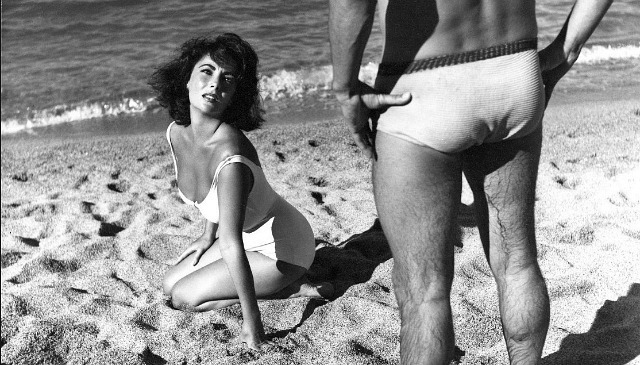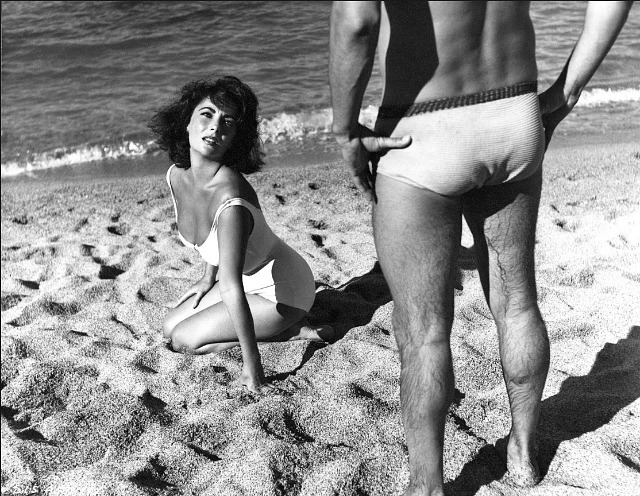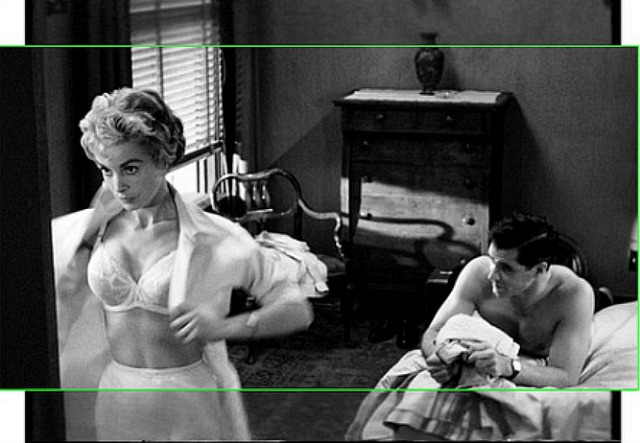Eight years ago I posted about an unfortunate decision by Universal Home Video to present a Psycho Bluray in 1.85 rather than 1.37. It actually would’ve been great if Universal had decided to present Alfred Hitchcock’s 1960 film in both aspect ratios a la Criterion’s On The Waterfont Bluray.
Hitch composed in 1.37 to protect the film for TV airings, but also because 1.37 compositions were perfectly balanced and added to the general intrigue for the extra detail. I ran several comparison shots that showed the differences.
The ’50s and early ’60s were transitional times with many suburban and rural theatres continuing to present films within 1.37 and 1.66 aperture plates, despite 1.85 fascists insisting that the 1.37 to 1.85 changeover was absolute and unequivocal beginning in April 1953. Boxy is beautiful, and it will never stop being so.
The recently released Twilight Time and Indicator Blurays of Joseph L. Mankiewicz‘s Suddenly Last Summer (’59) are another case in point. It was shot a year before Psycho, and the same dual framing aesthetic applies. Both versions crop Jack Hildyard‘s images down to 1.85, even though the 1.37 framings deliver a great sense of compositional balance, wholeness and breathing room.
There’s no explaining this, of course. Either you understand that the 1.37 image of a kneeling Elizabeth Taylor looking up at some anonymous beach stud is preferable to the 1.85 version, or you don’t. Either you appreciate seeing a little more water at the top of the frame and the buried-in-sand feet of the beach stud, or you don’t. Either you get that the 1.37 version is perfectly framed and balanced and that the 1.85 image is less fulfilling and that God himself prefers the former, or you don’t. And if you don’t…well, I’m sorry you feel that way. But you have no eyes.












